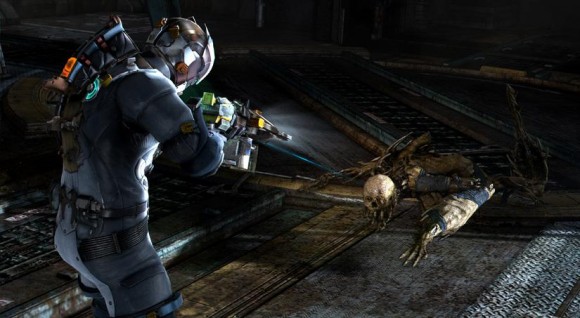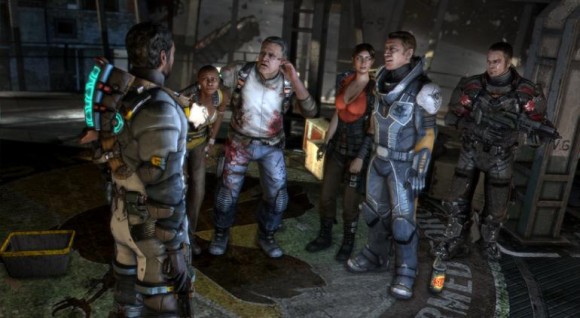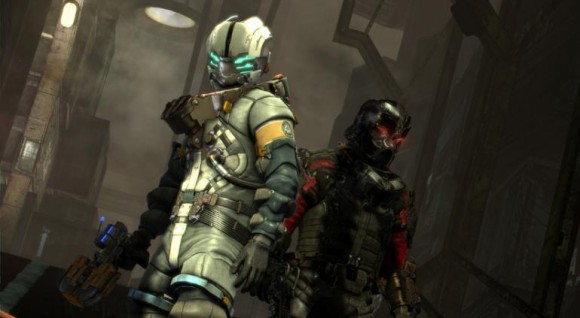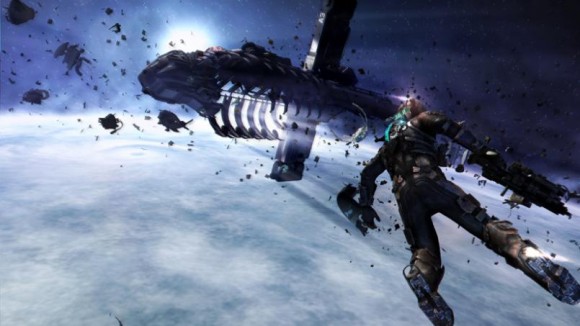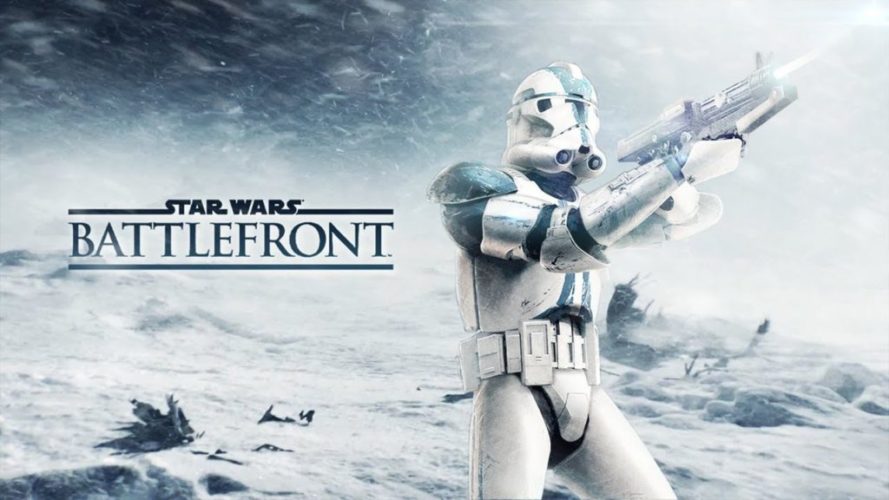Reviews & Previews
Dead Space 3 Review
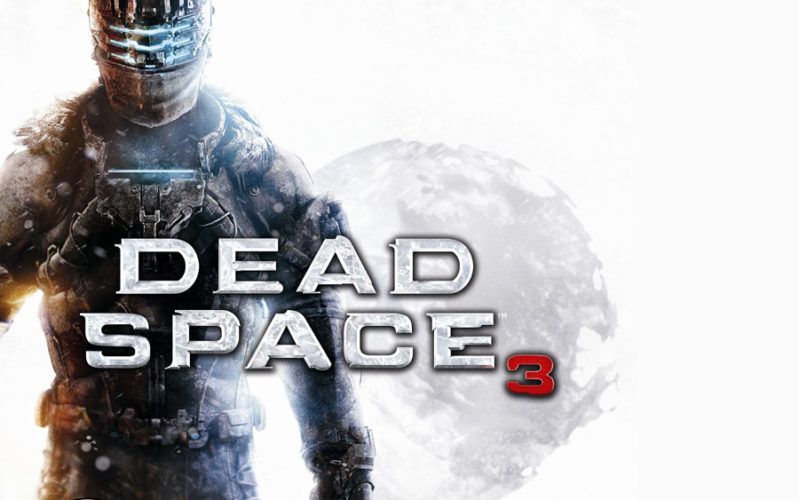
 Dead Space 3 is, of course, the long awaited third iteration of a series that began life as a survival horror game and ended with something notably less fear inducing, but still thoroughly enjoyable. It initially struck me as odd that the series moved away from its original intentions in Dead Space 2, opting for a more action oriented game than one with the subtle build-up of suspense followed by a BOO, gotcha moment upon which so many horror titles rely. When I first played the original Dead Space, I remember jumping out of my seat on more than one occasion. Maybe it was because I only played it at night around Halloween, or because that was almost five years ago and I was a much bigger wussbag back then; reflecting back on it, I think Dead Space just managed its suspenseful moments better. That isn’t to say the series has somehow gone downhill since the original. As a matter of fact, I’d say the series has become a less cerebral experience but a more enjoyable one; it’s as if the developers of second and third games became more, Visceral (See what I did there? I’m so darn clever!).
Dead Space 3 is, of course, the long awaited third iteration of a series that began life as a survival horror game and ended with something notably less fear inducing, but still thoroughly enjoyable. It initially struck me as odd that the series moved away from its original intentions in Dead Space 2, opting for a more action oriented game than one with the subtle build-up of suspense followed by a BOO, gotcha moment upon which so many horror titles rely. When I first played the original Dead Space, I remember jumping out of my seat on more than one occasion. Maybe it was because I only played it at night around Halloween, or because that was almost five years ago and I was a much bigger wussbag back then; reflecting back on it, I think Dead Space just managed its suspenseful moments better. That isn’t to say the series has somehow gone downhill since the original. As a matter of fact, I’d say the series has become a less cerebral experience but a more enjoyable one; it’s as if the developers of second and third games became more, Visceral (See what I did there? I’m so darn clever!).
Dead Space 3 picks up two months after the events of Dead Space 2. Within these two months Isaac Clarke and Ellie Langford develop a romantic relationship, but due to Isaac’s inability to return to “normal” life Ellie, reluctantly, leaves him and disappears. As Isaac is brooding away inside his lunar colony apartment he is ambushed by a pair of EarthGov soldiers: Captain Robert Norton and Sergeant John Carver. Norton tells Isaac that he needs his help finding Ellie, who told Norton to contact him should anything go wrong. Upon hearing it was Ellie who, in a roundabout way, asked for his help, Isaac cooperates and the three men begin making their way out of the lunar colony and onto a ship. Unfortunately, things go awry, when Unitoligist soldiers, who have more or less taken over EarthGov, activate a Marker, causing another necromorph outbreak. Isaac gets separated from his new companions and is forced to meet up with them further ahead. After fighting off waves of Unitoligist soldiers, necromorphs, and surviving an encounter with the commander of the Unitoligists, Jacob Danik, Isaac is reunited with Norton and Carver; the three of them board a ship and quickly warp through space to the location where Ellie is presumed to be. After a rough arrival, Isaac, Carver, and Norton find Ellie and her crew aboard the derelict CMS Roanoke. Ellie tells Isaac that information regarding how to end the necromorph outbreak once and for all resides aboard the Roanoke. Soon, Isaac finds out the nearby planet Tau Volantis is the Marker home world, and the key to the destruction of all Markers resides on its surface. Not everyone present is thrilled with exploring an alien planet, but Ellie and Isaac urge them onward. Together Isaac, Ellie, and their companions travel to the planet to definitively end the Marker’s reign, but not everyone on Tau Volantis has the same goal in mind and things become increasingly dire when Danik and his men arrive to stop Isaac and initiate convergence.
The narrative, while decent, is very predictable, to the point that I started to call out my predictions for what would happen next: and I was usually right. I won’t say who, but when a character is about to die you can see it coming a mile away so that by the time their death scene comes around, it loses all meaning. Isaac also must be the unluckiest guy in the galaxy because he always seems to be in the wrong place, at the wrong time; either that or Visceral was grasping at straws to come up with action sequences. I find it hard to take the game seriously when Isaac continually finds himself in improbable situations such as a bulldozer that has been sitting on a frozen cliff for 200 years suddenly decides to fall right as Isaac walks by. It’s also distracting when he gets separated from his companions for the thousandth time right after reuniting with them.
However, the biggest issue with the story is the botched way in which the developers went about enacting Dead Space 3’s drop-in cooperative mode. In co-op mode the second player takes the role of Sergeant John Carver to help Isaac along the way. Together, you and another player unlock the ability to play through various co-op only side missions. To say I wasn’t a little worried about the inclusion of co-op in a series that has thus far appealed to the idea of loneliness and isolation would be an outright fabrication. So what did I end up thinking about the co-op mode? I couldn’t tell you as I didn’t get to play it due to my terrible internet connection and the fact that local co-op is not supported. What I can comment on are the various hold overs from co-op mode that make several moments in single player very choppy and awkward. Oftentimes you walk into an area, triggering a cutscene, and suddenly Carver appears from nowhere and acts as if he’s been right beside you the whole time. The first time this happened I literally said, and I quote: “Wha…? Who the eff are you and where did you come from!?” Because Carver had only been in the background of a few scenes up until that point I was not aware of his presence enough to recognize him; I thought maybe Isaac was having hallucinations about an ex-boyfriend this time around. Then, as the cutscene ends, Carver says something along the lines of “let’s go” and walks off camera to only be seen again during the next cutscene he’s involved in. From what I’ve read online, the co-op version of the story is executed much better, giving Carver much more character development as we explore his complicated past. Thankfully, this means the awkward cutscenes are much more coherent and are given much more context. However, knowing this just makes me feel cheated: as though I’m getting the equivalent of movie edited for television due to time constraints.
Like I said before, the narrative is decent, even though it’s predictable, and there are actually quite a few things I enjoyed about it. For starters, the opening sequence where you play as a soldier on Tau Volantis 200 years prior to Isaac’s story really sets up the tone for the rest of the game while also acting as a sort of veiled tutorial level. Upon completion of this level, I found myself itching to learn more about this alien world. Another aspect I thoroughly enjoyed was just how interesting of a character Isaac becomes as the story progresses. It’s quite refreshing to play as an intelligent, emotional character with a clear goal in mind, rather than a military meat-head following meaningless orders barked from a commanding officer. For the most part Isaac is the only character worth caring about, though other characters start to show some promise towards the end, but by then it’s too little, too late.
The journals and artifacts left behind by unseen characters really go a long way towards fleshing out Dead Space 3’s mythos and universe. Those left behind by Unitoligist soldiers are particularly interesting because they make them seem more like humans with a strong belief, rather than religious zealots. Through their writing you hear the doubts they have about their actions and the actions of their group, as well as their reasoning behind why they believe in their cause so greatly. The most touching moment in Dead Space 3 is one cutscene where Isaac and Carver are talking about what a “good man is” and whether or not either of them would be considered a good man. This scene displayed a great amount of writing talent on the part of the developers and I actually felt something during this conversation; I imagine I would have felt even more had I gotten Carver’s back story, but I’ve complained about the co-op situation already so we’ll leave it at that. Apart from that I’ll just comment on how superb the voice acting is, even for characters I didn’t give a crap about, and the last few chapters become increasingly less predictable, having a few twists I honestly didn’t see coming.
However, where Dead Space 3 really shines is in its gameplay. To start with, it still blows me away just how immersive each of these games is, thanks mostly impart to how clean the user interface is. The bench now acts as both a shop and a weapons modification system. No longer do you upgrade your weapons by finding power cores and plugging them into a flow chart; now you find upgrades such as weapon frames, circuit boards that increase your weapon’s stats, and materials that can be used to craft items and modifications. You also have the option of purchasing weapons, modifications, items, and materials through EA’s microtransaction service; i.e. pay real money for in game items, though I think this is a stupid addition designed to simply nickel and dime consumers who have already dropped $60 for the game. On the other hand though, paying real money is completely optional and completely ignoring this aspect of the game doesn’t affect your game in the slightest; after all, some of the DLC can be “purchased” with items called ration seals which can be found, for free, in game, so there is a decent balance.
By far my favorite addition is the aforementioned weapon customization mechanics. Finding different materials and weapon parts gives the player more of an incentive to explore the aesthetically refined environments that make up the world of Dead Space 3. If you’re anything like me you’re going to be spending a lot of time at the bench, tweaking your weapons to make them ever so slightly better. There is a lot of room for experimentation, and you don’t have to worry too much about wasting materials because you can always dismantle a weapon and start anew. This customization system is very reminiscent of inventory management traditionally associated with an RPG, adding some much needed depth to the overall experience. Rarely did I not have the necessary parts and materials to customize my weapon and improve at least some aspect beyond what it previously was. This was due in part to the scavenger bots you are able to deploy with the sole purpose of finding materials for you while you continue about the game unabated; with the inclusion of these bots I see no reason why anyone would use the microtransaction system unless they were just incredibly impatient.
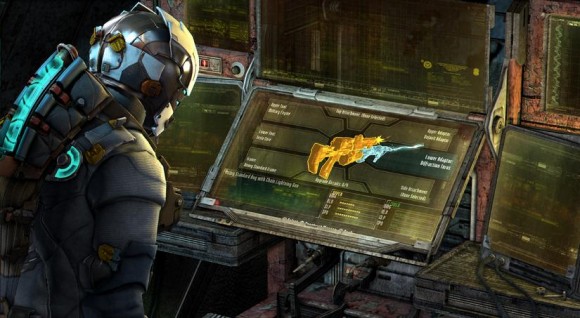
“Fifteen more tungsten and I can have a gun that shoots shurikens and lightning!”
One small caveat I have with the weapons in Dead Space 3 is how little incentive there is for using more than one weapon. This time around Isaac can only equip two weapons, but it hardly matters when, if you know what you’re doing, you can craft a gun to fit almost any situation. Each gun has two triggers which can each fire an entirely different weapon; want a machine gun with a rocket launcher? You got it! How about a combination buzz saw and revolver? It’s yours! On top of all this is the fact that all weapons utilize the same ammunition, so I’m willing to bet I’m not the only one who went through the entirety of the game continually upgrading a single weapon. Speaking of ammo, it and other sundries such as health and stasis aren’t purchased, per say, rather you craft these items out of the same materials used to create weapon components. I think this was smart thinking on the part of the developers as it forces the player to pay close attention to what resources are being utilized where.
If for some reason you get bored with the main story, there are quite a few optional missions for you to tackle: these really only serve the purpose of finding more upgrades and materials, as well as lengthening the game. The downside of these missions is that the can get very repetitive and they utilize many of the same game assets, so there will be a lot of déja vu moments as you trek down the mirror image of a hall you’ve already traversed, or you find yourself fighting off a hoard of enemies in the same nearly identical room. These missions are more or less equivalent to grinding and have the bad habit of popping up right in the middle of a frantic story arc. To someone like me who wants to complete as much of a game as possible, the position of these missions can act as a major distraction, throwing off the tone of the narrative in progress, however, a simple solution to this would be to simply ignore optional missions altogether.
Dead Space 3 took me about 20 hours to complete, but I spent a good chunk of that time customizing my weapons and completing most of the optional missions; I think it’s safe to say Isaac’s latest adventure is much larger and more fully fleshed out than previous entries in the series. It isn’t all that scary, sure; however, there are a few startling moments, like when the incredible hulks of necromorphs chase after you and all you can do is run, but this isn’t the same as the sheer terror games like Amnesia: The Dark Descent or Slender bring about. That said, I still had a lot of fun with Dead Space 3. It’s by no means a masterpiece, but it is a very well designed and enjoyable experience that had me saying “Holy crap, that was awesome!” more than a few times. I wish more attention had been given to character development and smoothing out the inconsistencies between the single player and cooperative plots, but despite this I still had a great time and I might even go so far as to call this the best in the series; it’s certainly my favorite. Hopefully there won’t be a Dead Space 4 because everything feels tightly wrapped up and I’m happy with how it ended; here’s to hoping that feeling never goes away.
Final Rating:
Reviews & Previews
Valorant Game Review: Gameplay, Monetization, and Safe Top-Up Tips

Introduction: Enter the World of Valorant
Riot Games’ Valorant has become one of the most influential tactical shooters in recent years, blending precise gunplay with hero-style abilities. Unlike traditional FPS titles, Valorant requires players not only to aim well but also to think strategically about agent abilities, team synergy, and map control.
As players explore the game, many are drawn to unlocking weapon skins, battle passes, and premium bundles that enhance the overall experience. These items require in-game currency, which can be acquired when you choose to buy Valorant points. For a secure and smooth transaction, I’ve found LootBar to be one of the most reliable platforms, offering fast service and peace of mind when topping up.
Core Gameplay and Mechanics
Valorant is built on competitive integrity and teamwork. Each match pits two teams of five against each other, with one side attacking and the other defending. The attackers plant the “Spike” (similar to a bomb), while the defenders aim to prevent detonation.
What makes Valorant stand out is its unique blend of classic FPS gunplay with hero-based abilities. Unlike pure shooters, where winning relies solely on aim, Valorant demands strategic use of smokes, flashes, heals, and other utility skills. This layered complexity ensures that no two matches feel the same.
For casual players, the game offers quick modes like Spike Rush and Deathmatch, making it easy to enjoy Valorant in short sessions. Hardcore players, meanwhile, can grind ranked matches, aiming to climb from Iron all the way to Radiant.
Agents and Customization
The roster of agents in Valorant is one of its biggest attractions. Each agent has unique abilities that can turn the tide of a match, from duelists designed to secure kills to controllers that manipulate the battlefield with smokes and walls.
Customization plays a huge role in keeping the game fresh. Skins for weapons are more than just cosmetic—they provide sound effects, finishers, and animations that add flair to your victories. While skins don’t alter gameplay balance, they are highly sought after in the community, becoming a way to show identity and prestige.
This is where Valorant Points (VP) come in. Skins, bundles, and event passes all require VP, making them the primary currency for players who want to personalize their gameplay.
Valorant’s Payment System and Monetization
Overview of In-Game Purchases
Valorant uses two main currencies:
· Valorant Points (VP): Purchased with real money and used for skins, bundles, and event passes.
· Radianite Points (RP): Primarily used to upgrade weapon skins, often acquired alongside VP.
Players frequently invest VP to unlock exclusive cosmetics, such as seasonal collections, limited bundles, or battle passes. These time-sensitive offers often create a sense of urgency, encouraging players to recharge quickly so they don’t miss out.
Pay-to-Win Considerations
One of the strongest aspects of Valorant’s system is that it avoids being “pay-to-win.” Spending money does not grant raw gameplay advantages—accuracy, reflexes, and teamwork still determine victory. Instead, purchases enhance the game’s aesthetic and social experience.
That said, investing in skins can save time compared to grinding for smaller rewards, and it allows players to participate fully in seasonal events without limitations.
Safe, Fast, and Reliable Top-Up Solutions
When it comes to topping up, safety and speed are critical. Players don’t want to risk their accounts or experience delays. That’s why many turn to platforms like LootBar, which emphasize secure transactions, fast delivery, and a smooth user interface.
LootBar stands out with strong trust metrics and a reputation among gamers for reliability. Using it ensures you can focus on playing Valorant, rather than worrying about whether your points will arrive on time.
Community, Social Features, and Competitive Scene
Valorant thrives not only as a game but also as a global esports phenomenon. It’s ranked ladder fuels competition, while international tournaments like the VCT (Valorant Champions Tour) attract massive audiences.
For casual players, the game’s social features make it easy to connect with friends, form squads, and join communities. Limited-time events and seasonal missions encourage teamwork and participation, keeping the community active year-round.
This dual approach – serving both casual and competitive players—is one of Valorant’s greatest strengths.
Pros and Cons of Valorant
Pros
· Tight, strategic gameplay with high skill expression
· Wide roster of agents with unique playstyles
· Regular updates and seasonal events keep the game fresh
· Strong esports ecosystem and global recognition
Cons
· Steep learning curve for beginners
· Skins and bundles can be costly
· Free players may face long grinds to maximize progress
While these drawbacks exist, they are softened by the fact that the core gameplay remains free-to-play and fair. Occasional VP purchases can help smooth the journey without undermining balance.
Tips for New Players
For those just starting out, it’s wise to:
· Begin with easier agents like Phoenix or Sage to learn core mechanics.
· Play unranked modes before diving into competitive matches.
· Save Valorant Points for bundles or battle passes, which offer more value.
A small VP purchase early on can also give new players access to skins that make the experience more enjoyable, without being overwhelming.
Conclusion: Is Valorant Worth Playing?
Valorant has cemented its place as one of the best tactical shooters available today. It combines strategic depth, fast-paced gunplay, and a thriving community, making it appealing to both casual and competitive players.
For those looking to personalize their journey, unlocking skins and bundles is part of the fun. The safest and most convenient way to do so is to buy Valorant points through LootBar. With a trusted platform handling the transaction, players can focus on what matters most—outsmarting opponents and enjoying every match.
Features
Exploring Valorant eSports Stats: Unveiling the Metrics Behind Competitive Excellence

In the rapidly expanding realm of Valorant eSports, statistical analysis plays a pivotal role in understanding player performance, team dynamics, and the strategic nuances that define success in competitive play. This article delves into the significance of Valorant eSports stats, their impact on the competitive landscape, and how they empower players, teams, and fans alike.
Key Metrics in Valorant eSports Stats
Valorant eSports stats encompass a wide array of metrics that provide insights into player proficiency and team strategies. These include individual performance indicators such as kill-death ratios (K/D), average damage per round (ADR), headshot percentages, and assist counts. Team statistics such as round win percentages, first blood percentages, and economy management efficiency further illuminate strategic strengths and areas for improvement.
Analyzing Player Performance and Contribution
For professional Valorant players, statistics serve as a critical tool for evaluating individual performance and contribution to team success. By analyzing metrics like K/D ratios and ADR, players can assess their impact in securing eliminations, dealing damage, and supporting team objectives. This data-driven approach enables players to identify strengths to leverage and weaknesses to address, enhancing their overall effectiveness in competitive matches.
Strategic Insights and Adaptation
Valorant eSports stats provide valuable strategic insights that shape team tactics and gameplay adaptations. Coaches and analysts analyze statistical trends to optimize agent selections, refine map strategies, and counter opponents’ playstyles effectively. The ability to leverage data-driven decision-making empowers teams to evolve their tactics, adapt to meta-game shifts, and maintain a competitive edge in the dynamic world of Valorant eSports.
Tracking Tournament Trends and Meta-Game Evolution
Beyond individual matches, Valorant eSports stats track broader tournament trends and meta-game evolution. Historical data on agent pick rates, map preferences, and round outcomes reveal emerging strategies and meta-shifts over time. This analytical depth allows teams and analysts to anticipate trends, innovate strategies, and stay ahead of competitors in high-stakes tournaments and league play.
Fan Engagement and Spectator Experience
Valorant eSports stats enrich the spectator experience during live broadcasts and tournament coverage. Fans can follow real-time updates on player performances, compare stats across matches, and engage in discussions about standout plays and strategic decisions. Interactive platforms and statistical dashboards enhance viewer engagement, fostering a deeper connection with the competitive narratives unfolding in Valorant eSports.
Impact on eSports Betting and Fantasy Leagues
Valorant eSports stats play a crucial role in eSports betting markets and fantasy leagues, where informed decision-making hinges on statistical insights. Bettors and fantasy league participants leverage player and team stats to assess form, predict match outcomes, and manage their investments strategically. Real-time updates and comprehensive data analysis enhance the strategic depth and excitement of eSports engagement for fans worldwide.
Technological Advancements and Data Visualization
Advancements in technology have revolutionized how Valorant eSports stats are accessed and analyzed. Streaming platforms and eSports websites offer sophisticated data visualization tools, interactive heatmaps, and player performance overlays that enhance the depth and accessibility of statistical analysis. These technological innovations provide analysts, commentators, and fans with enhanced insights into gameplay dynamics and strategic decision-making.
Future Innovations in Statistic Analysis
As Valorant continues to evolve as an eSports powerhouse, the future of statistical analysis promises further innovations. AI-driven predictive analytics, enhanced machine learning algorithms, and real-time performance tracking technologies are poised to revolutionize how eSports stats are processed and utilized. These advancements will elevate the precision, depth, and predictive capabilities of statistical analysis in Valorant eSports, shaping the future of competitive gaming.
Casual
Encouraging Growth and Motivation: Resources for Child Development

Child development is a complex journey marked by critical milestones where each stride forward builds upon the foundation of the previous one. Acknowledging children’s individual needs, pediatric therapy services tailor strategies to foster physical, emotional, and cognitive growth. To support this transformative process, environments that prompt curiosity and engagement, coupled with advanced educational tools, play an instrumental role in shaping young minds. These resources, carefully selected and applied, can significantly amplify a child’s developmental trajectory. Keep reading to learn about the effective ways these tools and techniques can aid in advancing childhood milestones.
Pediatric Therapy Services: Enhancing Developmental Milestones
Pediatric therapy services support children as they reach and surpass developmental milestones. These services, often provided by skilled therapists, address various growth challenges, ensuring each child has the best possible start in life. From speech and occupational therapy to physical and behavioral interventions, these professionals tailor their approach to meet the unique needs of every young patient.
Therapists work relentlessly to motivate children, fostering an environment where milestones are not merely achieved but celebrated. Through personalized, one-on-one sessions, children gain the confidence and skills necessary to navigate their developmental journeys more easily. The trust between therapist and child is a solid foundation for consistent progress and paves the path for lifelong learning and adaptation.
Resource provision is a key component of pediatric therapy, equipping parents with the tools to continue therapy practices at home. Effective communication between therapists and families ensures a cohesive strategy that envelops the child’s daily routine, enhancing the therapy’s impact. It also allows parents to identify subtle progress, reinforcing their pivotal role in the child’s developmental success.
If you’re looking for pediatric therapy in your area, a simple Google search like “pediatric therapy Arizona” will help you find local providers and services tailored to your child’s needs, ensuring they receive the specialized care necessary for their development.
Optimizing Play Spaces: Creating Environments for Learning and Exploration
Optimized play spaces are vital platforms where children engage with their world, build skills, and unleash their creativity. Designers of such areas pay astute attention to elements that promote safe exploration and intellectual stimulation. A thoughtfully arranged play environment serves as a place of entertainment and a crucible for burgeoning development.
Professionals incorporate a variety of tactile and visual stimuli within play areas to cater to diverse developmental needs and interests. Stimulating sensory experiences is central to cognitive and motor skill refinement among younger populations. The intentional selection of colors, textures, and interactive features sparks curiosity and encourages physical activity, which is fundamental to healthy growth.
Accessibility remains paramount in creating play spaces, ensuring they cater to children across all abilities. Including adaptive resources within these environments demonstrates a commitment to inclusive development, allowing every child to participate and benefit from the joy and learning play offers. Such inclusiveness fosters a sense of community and belonging, which is essential for emotional and social development.
Affording children autonomy in their play advances self-directed learning and problem-solving capabilities. When children feel empowered to make choices within their play, they better understand their preferences and abilities, setting the stage for confidence and self-awareness — qualities that are instrumental as children grow and transition through life’s stages.
Additionally, incorporating elements like fake plants or outdoor plants from retailers like Nearly Natural outdoor plants into play spaces can enhance children’s sensory and aesthetic experience.
Interactive Learning Tools: Technology and Resources for Cognitive Development
Interactive learning tools harness technology’s power to solidify children’s cognitive development. These digital resources provide an array of engaging, educational content that aligns with critical thinking and problem-solving skills.
Software and applications designed for children’s learning capitalize on the allure of multimedia to capture young minds. Effective education solutions provide children with stimulating challenges that are age-appropriate and aligned with developmental targets.
The discerning use of educational technology in classrooms and homes can reinforce concepts and skills taught through traditional methods. It creates a harmonious blend of instruction and interactive play, thereby cementing a child’s understanding and retention of information.
Providers of such educational platforms are ever vigilant, updating content to reflect new educational strategies and the latest academic research. Thus, children equipped with these technological tools remain at the vanguard of current learning methodologies, all while engrossed in fun and dynamic ways.
Overall, caregivers and educators can provide comprehensive support for children’s developmental journeys by integrating pediatric therapy services, optimized play spaces, and interactive learning tools. These resources nurture their physical, emotional, and cognitive growth and cultivate a lifelong love for learning and exploration.
-

 Guides6 years ago
Guides6 years ago6 Proven Ways to Get more Instagram Likes on your Business Account
-
Mainstream11 years ago
BioWare: Mass Effect 4 to Benefit From Dropping Last-Gen, Will Not Share Template With Dragon Age: Inquisition
-

 Mainstream7 years ago
Mainstream7 years agoHow to Buy Property & Safe Houses in GTA 5 (Grand Theft Auto 5)
-

 Guides1 year ago
Guides1 year agoFree Fire vs PUBG: Comparing Graphics, Gameplay, and More
-

 Casual2 years ago
Casual2 years ago8 Ways to Fix Over-Extrusion and Under-Extrusion in 3D Printing
-
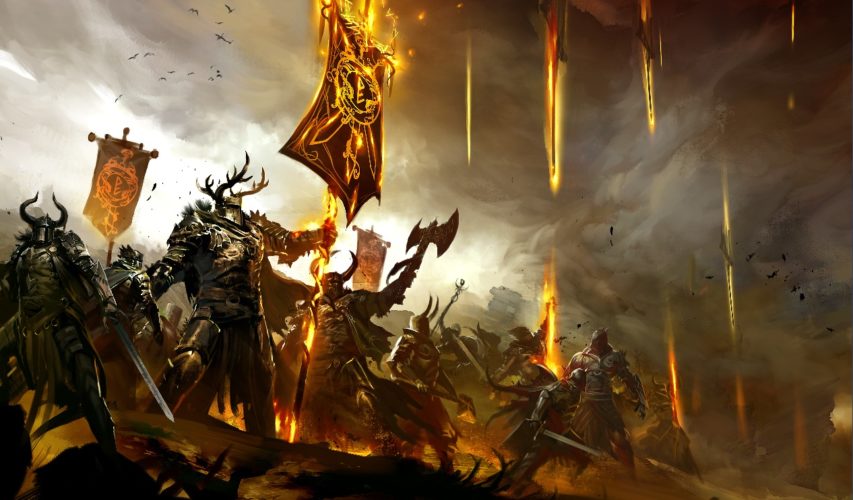
 Mainstream13 years ago
Mainstream13 years agoGuild Wars 2: The eSports Dream and the sPvP Tragedy
-

 Other2 years ago
Other2 years agoAjjubhai UID: Free Fire Details & Earnings
-

 Gaming News2 years ago
Gaming News2 years agoSwiping, Tapping, and Tilting: How Mobile Games Are Played Today

